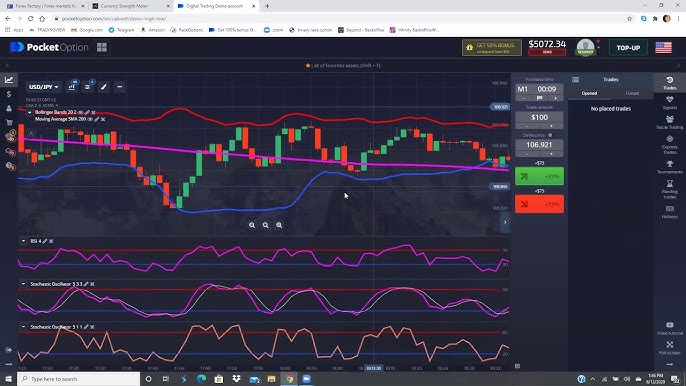
Pocket Option Fees: Understanding the Costs of Trading
When it comes to online trading, understanding the associated costs is crucial for effective management of your investments. This is particularly true with brokers like Pocket Option, which is increasingly popular among traders worldwide. In this article, we will delve deep into the different types of fees that Pocket Option charges, helping you make well-informed trading decisions. For a detailed breakdown, you can check this link: Pocket Option Fees https://pocket-option-in.com/fees/
Overview of Pocket Option
Pocket Option is an online trading platform that offers binary options and CFD trading across a range of assets, including currencies, cryptocurrencies, stocks, and commodities. The platform prides itself on its user-friendly interface, which is suitable for both beginners and experienced traders. However, like all trading platforms, it is essential to be aware of the fees that may be associated with trading on Pocket Option.
Types of Fees on Pocket Option
When trading on Pocket Option, you may encounter several types of fees, including:
1. Deposit Fees
Pocket Option does not typically charge deposit fees, which is a significant advantage for traders looking to minimize costs. However, it’s important to note that depending on the payment method you choose (such as credit cards or e-wallets), there may be fees imposed by the payment processor. Always check the terms of your payment method to ensure you fully understand any potential costs before making a deposit.
2. Withdrawal Fees
Withdrawal fees can vary depending on the method you choose to withdraw your funds. For instance, while bank withdrawals might incur fees, e-wallets like Skrill or Neteller may have different fee structures. It’s advisable to check the Pocket Option website for the most current withdrawal fees associated with different methods. Typically, Pocket Option aims to keep these fees relatively low, which benefits traders looking to access their funds quickly.
3. Trading Fees
One of the most significant aspects to consider is the trading fees. Pocket Option operates on a commission-based structure, which means that depending on the trade you execute, a portion of your earnings may go toward trading fees. However, it’s essential to note that these fees can vary based on your trading volume and the specific type of asset you are trading. High-frequency traders or those who execute larger trades may benefit from reduced trading fees, so it might be useful to inquire about any commission tiers that Pocket Option may offer.
4. Inactivity Fees

Many trading platforms charge inactivity fees to traders who have not made any trades or deposits over an extended period. Pocket Option is no exception. If your account remains inactive for several months, you may incur inactivity fees, which can affect your overall trading capital. To avoid this, it’s a good idea to keep your account active, even if you are trading small amounts periodically.
5. Currency Conversion Fees
If you are trading in a currency that differs from your account’s base currency, you may encounter currency conversion fees. These fees are charged by your bank or payment provider when converting funds to your trading account’s currency. It is worth checking which currencies are available and their corresponding conversion rates before making trades.
Understanding the Impact of Fees on Trading Strategy
The fees associated with trading on Pocket Option or any trading platform can significantly impact your overall profitability. Here are some strategies to minimize these costs:
1. Choose the Right Payment Method
Research the various payment methods available to you. While some may offer convenience, they may also come with higher fees. Opting for methods with lower or no fees can help maximize your investment.
2. Monitor Your Trading Frequency
Being aware of how frequently you trade can prevent unnecessary fees. If you are a frequent trader, look for platforms that offer reduced fees for high-volume trading to alleviate additional costs.
3. Keep an Eye on Inactivity Periods
To avoid inactivity fees, ensure that your account remains active. Even a small trade or deposit every few months can help mitigate these fees.
4. Understand the Fee Structure Before You Start Trading
Being fully informed about the fee structure before you begin trading is essential. This knowledge can help you formulate a trading plan that considers potential costs, making you a more effective trader.
Conclusion
In conclusion, understanding the various fees associated with trading on Pocket Option is essential for anyone looking to maximize their investment potential. By being aware of deposit and withdrawal fees, trading commissions, inactivity fees, and currency conversion costs, you can devise a trading strategy that minimizes costs and enhances profitability. Always stay updated with the latest information provided by Pocket Option, and utilize their resources to ensure that you are always in the know regarding potential fees. Happy trading!
